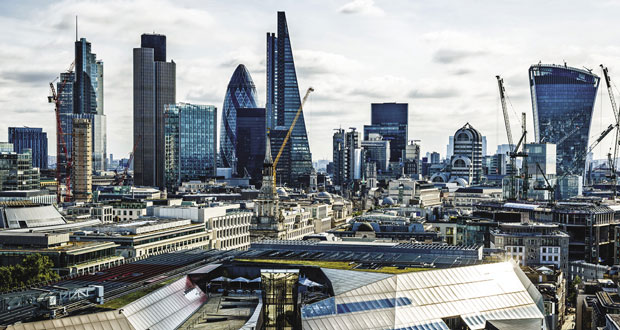How much of your budget has been affected by the adaptation to working from home?
|
Budget remains the same |
52.17% |
|
Budget has been reduced |
28.99% |
|
Budget has been increased |
11.88% |
|
Other |
6.96% |
According to the results, while over half had seen their budget remain the same, a significant proportion (30 per cent) saw their budgets reduced. The panel disagreed with this thinking. They argue that FMs needed support when building an environment for home workers because this is an extension of the business and there should be extra incentives in place to meet home workers’ expectations. And within commercial buildings, though savings have been made in areas such as catering, the additional costs of infection control and social distancing as well as increasing the level of air flow and ventilation has brought additional costs.
Looking ahead to next year, the panel agreed that FM budgets may be determined by real estate strategies, and while budgets for FM may remain high to maintain cleaning and security services, in the longer run, organisations may look to rationalise their CRE footprints. “When we get a good idea of what proportion of people will work from home in the longer term that’s where we’re really going to expect to see the effect on budgets”, said a panellist. “This could be a five or even 10-year plan where we see these budgets evolve and change, dependent on the leases organisations have on their properties.”
How is your organisation supporting home workers?
|
Regular online meetings |
82.61% |
|
Remote access to work files or network |
78.26% |
|
Computing equipment, mobile |
75.47% |
|
Video conferencing |
70.19% |
|
Ergonomic furniture (e.g. chair) |
42.86% |
|
WiFi network connectivity |
36.34% |
|
Other (please specify) |
5.59% |
As the lockdown richly illustrated, the FM remit extends way beyond the office door to where ever staff are based. The scramble to send people home in March meant that many organisations made what they thought were temporary arrangements for home workers, but the long lockdown requires more stringent management. It was disturbing to see then that just 42 per cent of respondents to our survey had secured ergonomic furniture and equipment for home-based staff. How our panel handled this issue did vary. Early on in the pandemic, some distributed existing office furniture which ensured staff had access to the same equipment they’d use in the workplace. Those who did not have the logistics to manage sending out equipment and furniture put assessments online and allowed home workers to make purchases based on a check list. Whatever the solution, it was agreed on the importance of maintaining ergonomic standards and ensuring there is an audit trail of equipment and furniture.
Does your organisation have mental health & wellbeing procedures in place for employees who are working remotely?
|
Yes |
58.07% |
|
Unsure |
22.05% |
|
No |
19.88% |
Concerns over the wellbeing of those working from home were reflected in the results of the survey, with over 82 per cent of respondents citing regular online meetings as a key way of keeping staff engaged and supported. Our panel concurred this was vitally important and longer term are also looking at “how we can improve the employee experience whilst still looking at being cost neutral; that includes both the environment for those who work in the office and those who work remotely”.
Delving deeper into the wellbeing of those working from home, the survey found that more than half (58 per cent) had wellbeing procedures in place, a tally which was echoed by our panel. They reported a range of initiatives, from regular quizzes to access to online support. Interestingly, much of this area of responsibility is being left to the FM discipline.
“Occupational health and safety are having conversations about what needs to be done, but the actions and ideas are moving into the realm of facilities. With FM effectively being on the ground and people seeing us more of the time we can feed back into HR. Whatever the HR strategy, the actual implementation will fall to the FM remit. In our business we formed a working party which takes a multidiscipline approach to looking after those working from home.”
What technologies is your organisation looking to adopt to help deal with COVID-19?
|
Digital technology to help manage the supply chain (e.g. scheduling visits, reducing need for physical inspections) |
43.17% |
|
Infection control systems (e.g. temperature monitoring systems) |
40.37% |
|
Communications software platforms |
34.16% |
|
Automated booking systems to manage space usage |
33.23% |
|
Hands free automation (e.g. automatic doors, taps etc.) |
31.37% |
|
HVAC systems designed to reduce airborne pathogens |
25.16% |
|
Remote worker monitoring software |
23.91% |
|
Development of apps (e.g. for zero touch sign in) |
21.74% |
|
IoT sensors to measure occupancy |
15.84% |
|
Other (please specify) |
9.32% |
One of the most notable consequences of the pandemic has been the development of a range of technological innovations to help combat infection, reduce contact and support social distancing. We wanted to know which of these technologies were most relevant to our readers. The most popular were digital technologies to help manage the supply chain, for example, scheduling visits or reducing need for physical inspections (43 per cent) and infection control systems, including temperature monitoring (40 per cent).
However, for our panel, (and this impression is backed by anecdotal evidence from FM services suppliers): “Far more importantly is that our people are seen on site so that occupants are reassured that somebody is there to make it a safer place. Technology has a role to play but FM is far more about the personal touch.”
The panel also agreed that sometimes there’s a tendency to use technology for tech sake without necessarily having a problem you want to resolve. However, most reported a rise in investments in IoT sensors to manage foot fall and the use of apps to enable virtual queuing to avoid for example, refreshment areas and toilet areas being overcrowded.
Finally, the results of the survey and the views of the panel confirm that FM is essentially about looking after people, not buildings. For despite the belief that technology will play a greater role than ever in the sector following COVID and that corporate real estate may be reduced to accommodate higher rates of home working, wherever and however the workplace is run, it’s the people aspect of facilities management which remains the most crucial part of the role.
Sara Bean, Editor FMJ
Vicky Thorp, Head of Facilities, CLS Holdings
Charles Siddons, Head of Operations, NHS Property Services
Alan Hutchinson, Facilities Director, Howard Kennedy LLP
Jan Portch, Office Manager, Landsec
Simon Francis, Principal Lead, Estates and Masterplanning, ZSL London Zoo
Darren Miller, Head of EMEA Facilities Operations, Paypal
Lucy Hind, Non-Executive Director, Harrogate Healthcare





